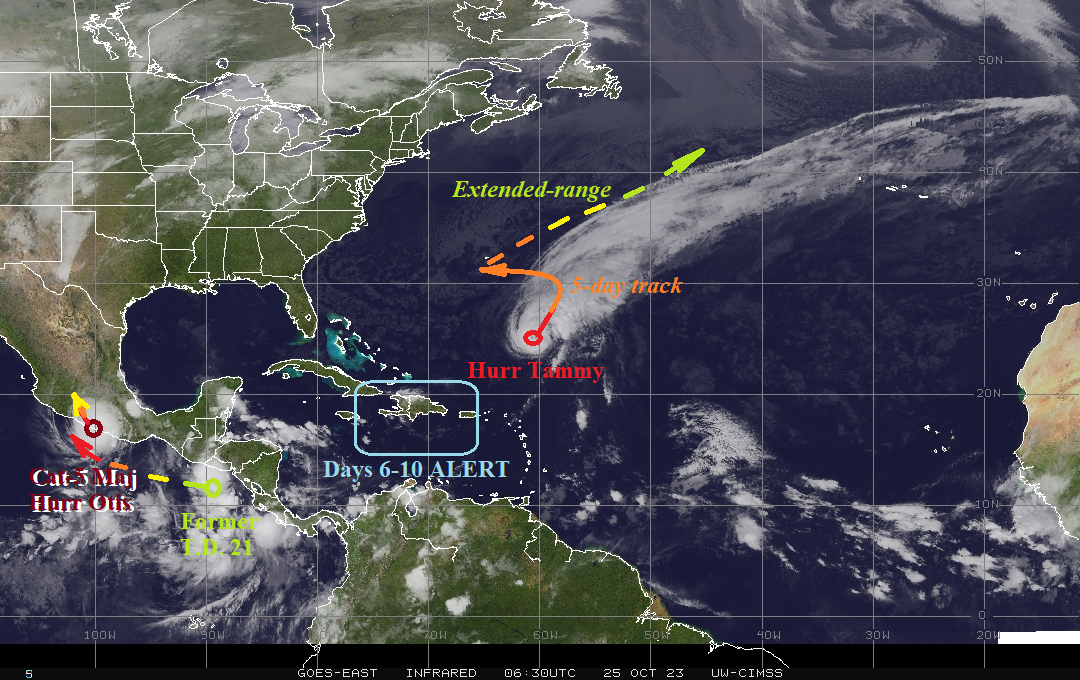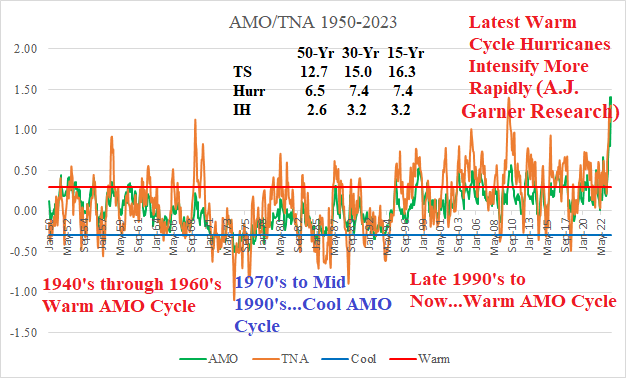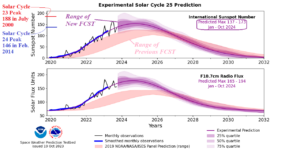
North Atlantic Tropics Week 2-4 Outlook: More late season trouble ahead!
10/25/2023, 5:22 am EDT
New Research Confirms Tendency for Faster Hurricane Intensification
10/31/2023, 8:52 am EDT
Fig. 1: NOAA updates the sunspot number/solar flux forecast for solar cycle 25 maxima.
NOAA updated the solar cycle 25 forecast late last week. Solar cycle 25 is interesting, beginning much more active than expected and well ahead of the initial forecast. However, recent months have brought a slowdown in solar activity making the over-achieving character of early solar cycle 25 to question. The new NOAA projection is certainly stronger than the initial forecast. Additionally, the arrival of solar maxima 25 is faster.
The updated outlook indicates solar cycle peak (sunspot number) is between 137 and 173 beginning early in 2024. The previous forecast was 115 with peak during the middle of 2025. In summary, the NOAA forecast is stronger than previously forecast, stronger than the previous (weak) peak of 2011-14 but not as strong as solar maximum 23 early this century.
Climate Impact Company notes the double peak character of solar cycle 23 and 24 with second peak averaging 18 months after first peak at near the same intensity. If a double peak occurs with solar cycle 25 maxima, the total length of solar maxima 25 could last into 2026.
As a reminder, the increased presence and sometimes high intensity of solar flares and/or coronal mass ejections (CME’s) associated with solar maxima can affect electric power grids, GPS and aviation, and low orbit earth satellites. Given the reliance of modern technology on a much higher number of satellites than during the last solar maximum, a potential for major disruptions is possible.
![Climate-Impact-Company-logo-sm[1]](https://climateimpactcompany.com/wp-content/uploads/2023/08/Climate-Impact-Company-logo-sm1.png)
